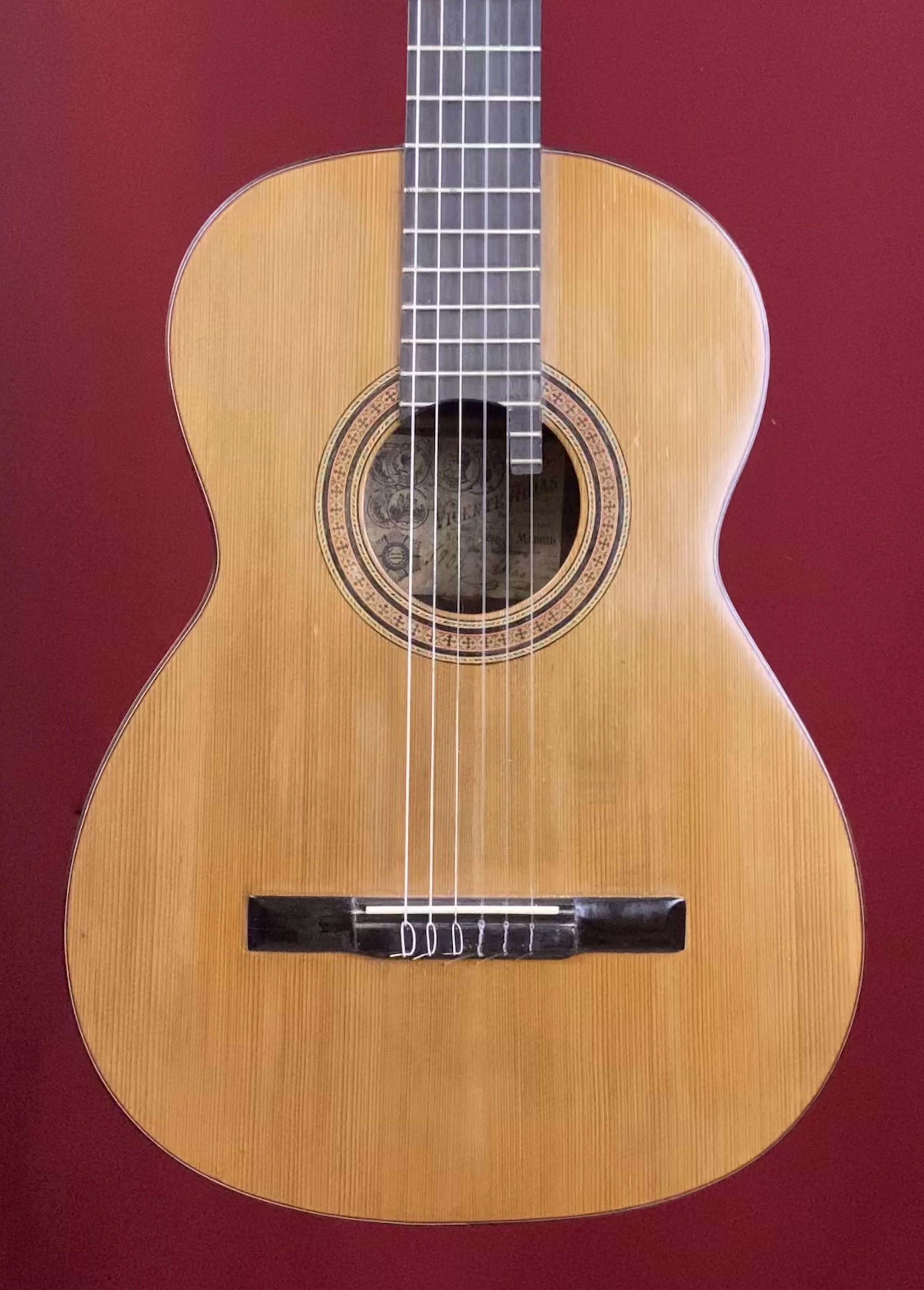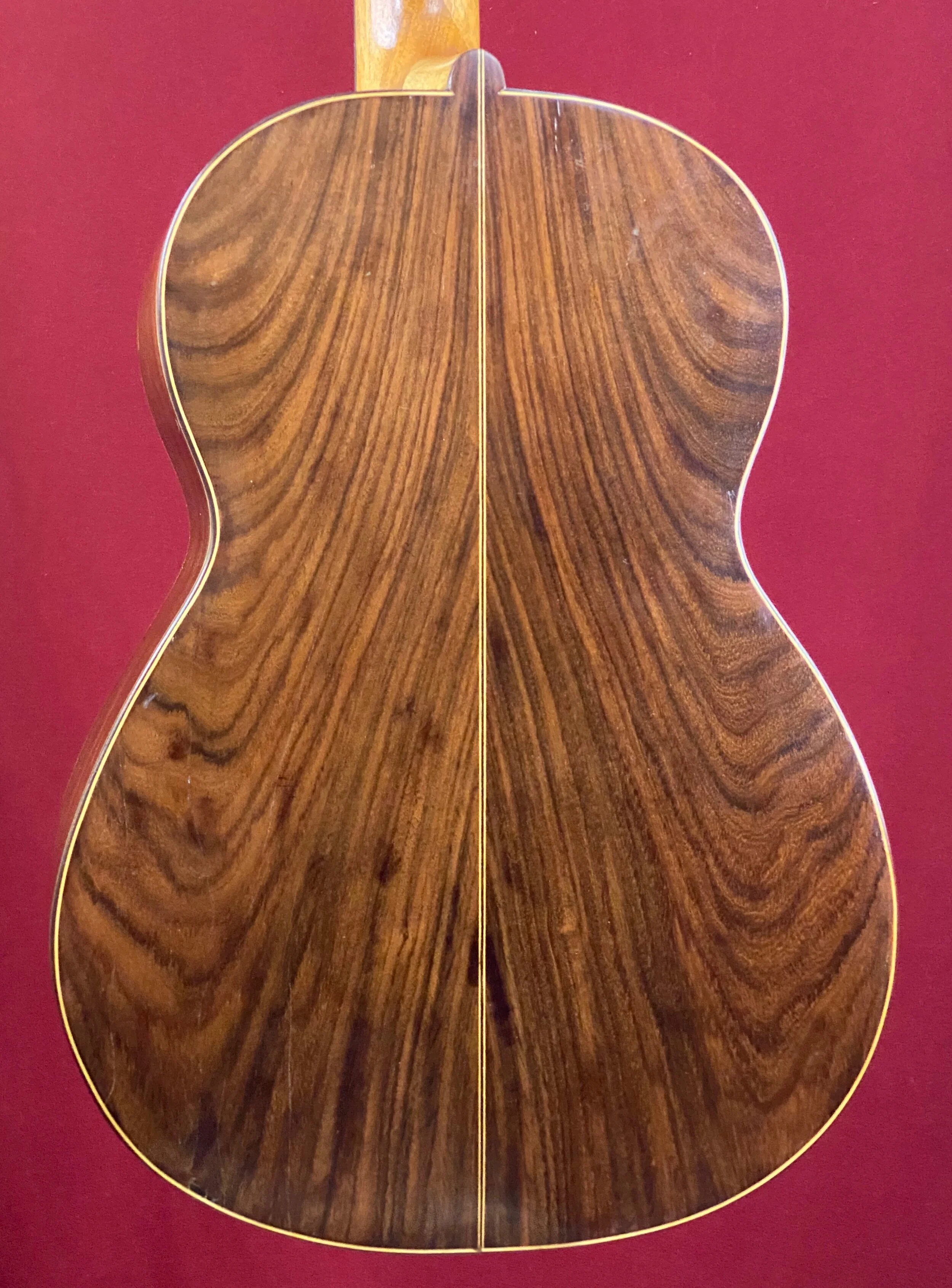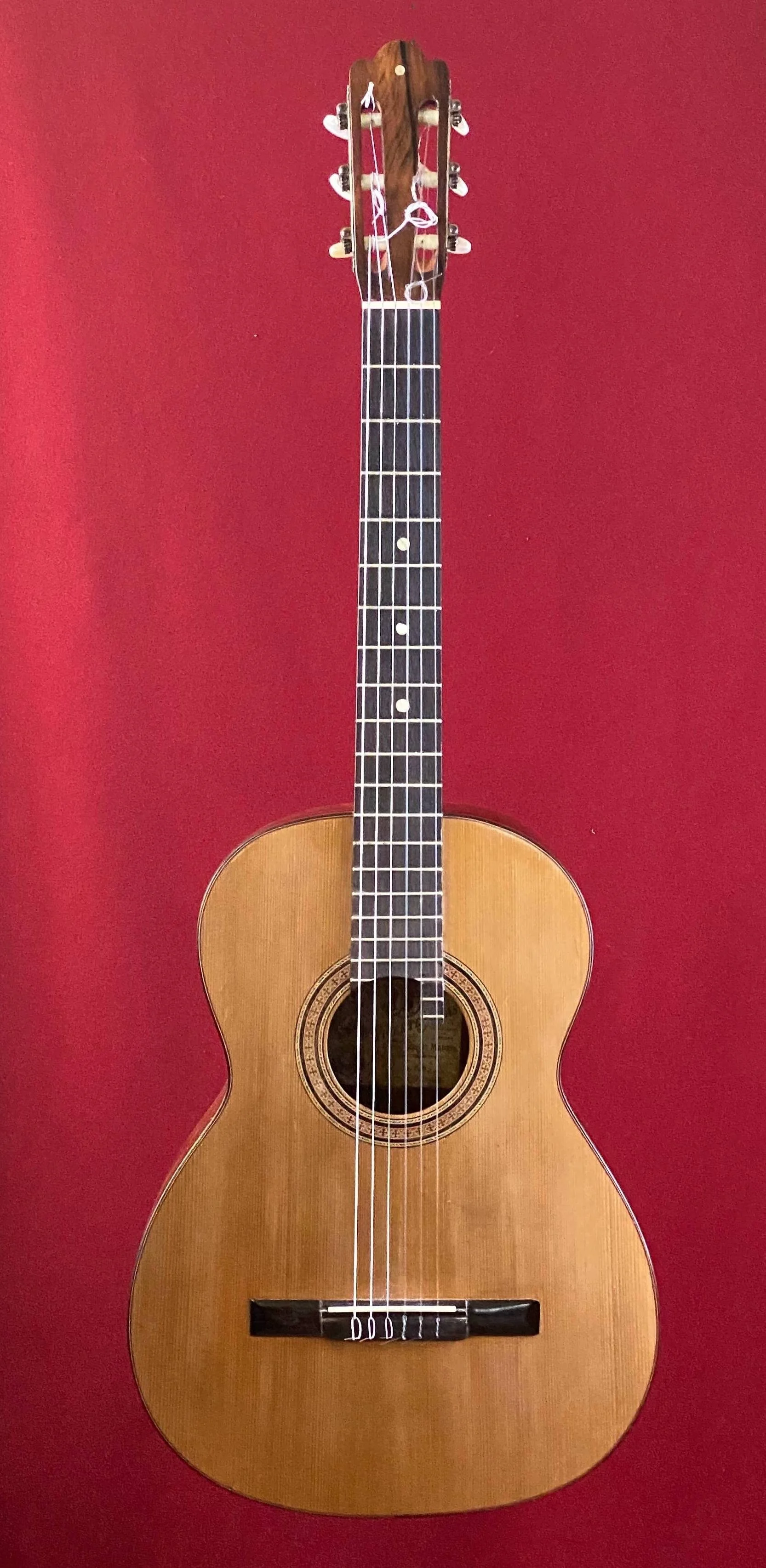1904 Vicente Arias Classical Guitar
1904 Vicente Arias Classical Guitar
Make: Vicente Arias
Model: Concert Classical Guitar
Model Year: 1904
Top: German Spruce
Back & Sides: Kingwood
Fingerboard: Ebony
Scale: 650
Nut: 50mm
Finish: French Polish
Tuners: Original
Upper bout; 260mm
Waist: 220mm
Lower bout: 355mm
Body length: 470mm
Depth at neck: 87mm
Depth at tail: 94mm
Sound hole: 84mm
Weight: 1155 gm
Country: Spain
Condition: Used - Excellent
Location: Tucson
Vicente Arias, born in Alcazar de San Juan, Ciudad Real, in 1833, occupies a unique place in the annals of 19th-century luthiery. His craftsmanship, often likened to the legendary Antonio de Torres, was revered not only for its elegance but also for its exceptional construction quality. Arias embarked on his guitar-making journey around 1860, a period when his talents began to shine.A captivating tale, as recounted by Emilio Pujol, weaves around Arias and the renowned guitarist Francisco Tárrega. In the late 1870s, Tárrega entrusted Arias with a distinctive task: crafting a compact guitar, concealed beneath his cape, enabling him to strengthen his fingers discreetly. This intriguing episode serves as a testament to Arias's ingenuity and adaptability. Throughout his career, Arias operated from various workshops. Records from 1889 place him at Paloma 12 in Ciudad Real, while later guides from 1898 to 1900 note his presence at Paloma 14. By 1903, he had relocated to Madrid, establishing his workshop at Alamo 3. Subsequent years witnessed several moves, including Calle Santa Isabel, No. 20, and Alamo 10, culminating in his final workshop address before his passing in 1914.
The guitar under consideration underwent a restoration, most likely in the 1950s, orchestrated by Andres Martin, a respected luthier in Madrid. Despite the restoration, the exact extent of the intervention remains somewhat shrouded in mystery. All these intricate details, including Arias's legacy, his collaborations with iconic musicians like Tárrega, and the restoration nuances by Martin, have been duly considered in determining its pricing.








